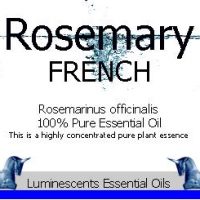Frankincense grows as a short shrub, about 3-7 metres with an abundance of leaves and blossoms with white or pale pink flowers.
This family of trees has many sub-species and the one in question is the genus Boswellia. Although there are over twenty-five species of Boswellia, there are but a dozen used in the production of frankincense.
The most common ones are as follows:
Boswellia carterii (the Mohr madow tree)
Boswellia frereana (the yigaar tree) from Ethiopia, Somalia and Oman.
Boswellia thurifera from Somalia and India.- THIS PRODUCT
Boswellia papyrifera from Ethiopia, East Africa and the Sudan.
Boswellia serrata primarily from the Indian subcontinent.
Boswellia neglecta is found in Kenya and India.
Boswellia rivae Ogaden frankincense, from South East Ethiopia.
Boswellia sacra The most famous variety of all (called variously hojary, hojari, houjari, hogary, hawjari, hawjeri), which grows wild in Arabia, inland, flourishing in the limestone hills, plains and valleys from Hadramawt east to Dhofar.
Frankincense is tapped from Boswellia trees through slashing the bark and allowing the exuded resins to harden. Tapping is done 2 to 3 times a year with the final taps producing the best resin due to its higher aromatic terpenes, sesquiterpenes and diterpenes content. High quality resin can be visually discerned through its level of opacity. Omani frankincense is said to be the best in the world, although quality resin is also produced in Ethiopia, Yemen and Somalia.
REPORTED ATTRIBUTES:
Traditional and Emotional uses reportedly include:-
Massage, inhalation. Add a few drops to a massage oil to warm, relax and restore an overworked or over-stressed body. Massage on the scalp and temples to relieve tension headaches. Inhale it directly or add it to a relaxing bath to remove stress and sweeten your mood.
Frankincense is used in perfumery and aromatherapy. The essential oil is obtained by steam distillation of the dry resin. The smell of the olibanum smoke is due to the products of pyrolysis. Frankincense was lavishly used in religious rites. According to the Bible’s Gospel of Matthew 2:11, gold, frankincense and myrrh were among the gifts to Jesus by the magi ‘from out of the east’. The growth of Christianity depressed the market for frankincense during the fourth century CE. Desertification made the caravan routes across the Rub al Khali or ‘Empty Quarter’ of Arabia more difficult. Additionally, increased raiding by the nomadic Parthians in the Near East caused the frankincense trade to dry up after about 300 CE.
HISTORY:
Frankincense has been treasured for centuries and was burnt as the original incense to appease the gods. It was used by many cultures to treat almost all known ailments. It is botanically related to the tree that the essential oil myrrh is taken from.
The name for this resin likely comes from incense of Franks since it was reintroduced to Europe by Frankish Crusaders. Although it is better known as frankincense” to westerners the resin is also known as olibanum, which is derived from the Arabic al-lubán (“the milk”) a reference to the milky sap tapped from the Boswellia tree. Some have also postulated that the name comes from the Arabic term for “Oil of Lebanon” since Lebanon was the place where the resin was sold and traded with Europeans. Compare with Exodus 30 : 34, where it is clearly named levonah, meaning either “white” or “Lebanese” in Hebrew.
The lost city of Ubar, sometimes identified with Irem in what is now Oman, is believed to have been a centre of the frankincense trade along the recently rediscovered ‘Incense Road’. Ubar was rediscovered in the early 1990s and is now under archaeological excavation.





